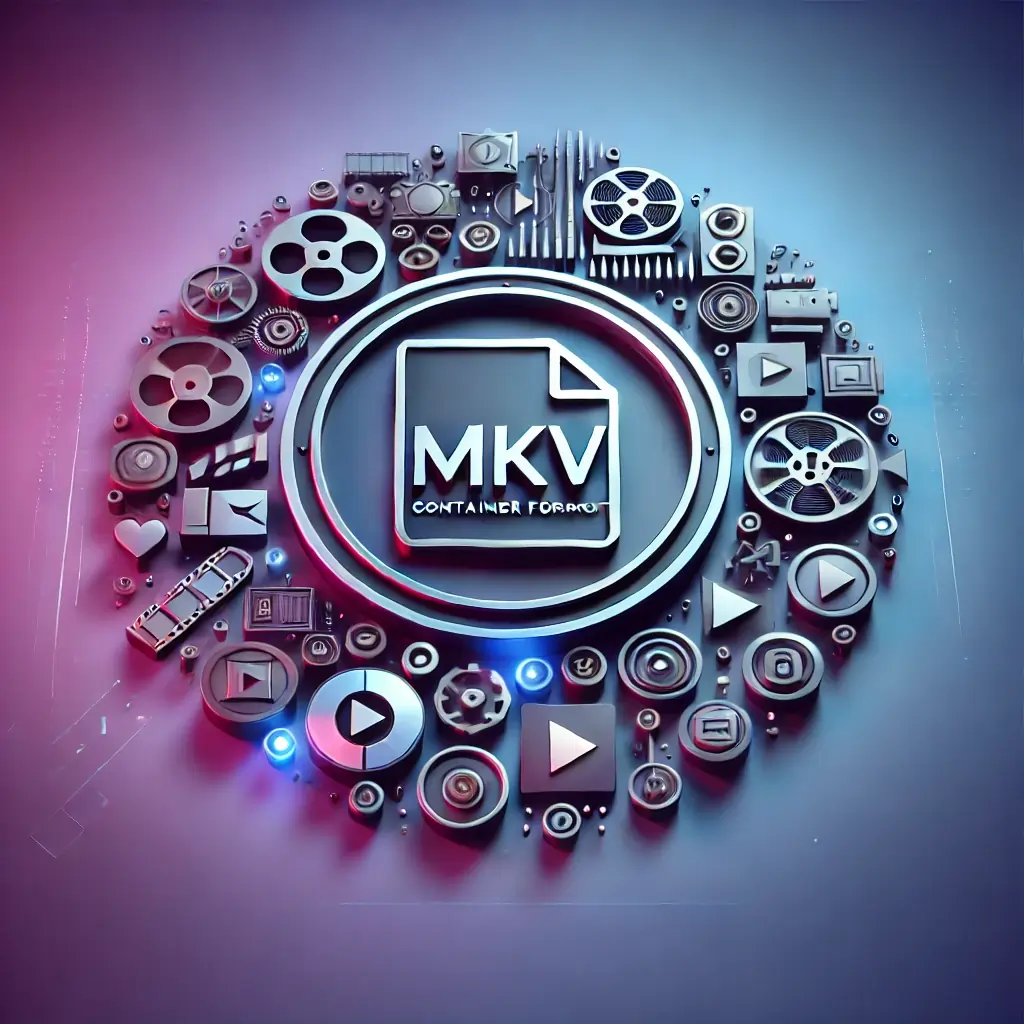Ever wondered how a single video file can house a full-length movie with multiple audio tracks, subtitles, and even chapter markers? The answer lies within the world of Matroska, and its most recognizable form: the .mkv file.
The .mkv file extension, a cornerstone of modern multimedia storage, represents more than just a file format; it signifies a versatile container capable of holding an astonishing array of multimedia elements. Consider it a digital vault, expertly crafted to safeguard and present complex audio-visual experiences. This is a file format that has revolutionized how we store, share, and experience digital media.
At its heart, an .mkv file is a Matroska multimedia container. This container format is an open standard, free to use, and designed to be incredibly flexible. This flexibility allows it to store an unlimited number of video, audio, picture, or subtitle tracks within a single file. Think of it as a digital Russian nesting doll, where each elementvideo, audio, subtitlesis neatly packaged within the main container.
| Feature | Description |
|---|---|
| File Extension | .mkv |
| Full Form | Matroska Video |
| Type | Multimedia Container Format |
| Purpose | Storing multimedia content like movies and TV shows |
| Key Features |
|
| Advantages |
|
| Disadvantages |
|
| Similar Formats | AVI, MP4, ASF |
| Derived From | The Russian word "matryoshka", meaning nesting doll |
The name "Matroska" itself provides a clue to its structure. Derived from the Russian word "matryoshka," meaning "nesting doll," the format is designed to hold multiple layers of content within a single file. This analogy perfectly illustrates how an .mkv file can contain multiple audio streams (perhaps different languages), several subtitle tracks, and the video itself, all neatly organized for playback.
The versatility of .mkv files makes them ideal for a wide range of uses. They are a preferred choice for storing movies and television shows due to their ability to preserve high-definition video quality while offering support for multiple audio and subtitle options. You might, for example, find an .mkv file containing a movie in its original English audio track, a dubbed version in Spanish, and subtitles in both French and German, all seamlessly accessible from a single file.
This capability extends beyond simple storage. Metadata, or data about the data, can also be stored within an .mkv file. This includes information such as chapter markers, which allow you to jump to specific scenes in a movie, and even thumbnail images. This metadata enriches the viewing experience and makes navigating through the content easier and more intuitive.
Unlike codecs, which are responsible for encoding and decoding audio and video, .mkv is a container. It acts as a shell that encapsulates the video and audio streams, along with additional data. Imagine a box: the box itself (the .mkv file) doesn't create the contents; it simply holds them. The contents of the box can be encoded using various codecs, such as H.264 for video and MP3 or AAC for audio. This separation means that .mkv files can support a vast array of codecs, making them incredibly adaptable to different media formats.
The open-source nature of the Matroska format is another significant advantage. Being an open standard, it is freely available for anyone to use and implement. This encourages wider adoption and ensures that .mkv files remain accessible on various devices and platforms. It also fosters continuous development and improvement, leading to better features and compatibility over time.
While the .mkv format is widely recognized and supported, its important to understand its relationship to other formats. It is similar in concept to other container formats like AVI and MP4, but offers some distinct advantages. One key difference is its flexibility in supporting a wider range of codecs and its ability to store a more comprehensive set of metadata.
Files with the extension .mkv can be used to accommodate all sorts of multimedia. The possibilities are practically endless: entire movies with several sound and subtitle tracks, chapter information, and thumbnail previews can all fit within a single file. The inclusion of such features makes .mkv files excellent for anyone who wants to store their content in the highest quality and with additional functionality.
In the context of stereoscopic video, Matroska supports 3D video files (.mk3d). Additionally, Matroska elementary stream files (.mks) are designed solely for subtitles, and mobile DJ video files, with a .kmv extension, are created on Sansui devices but are still based on Matroska's structure.
The ability to package video, audio, and metadata into a single file is a hallmark of .mkv's versatility, as is its ability to hold different file formats within a single entity. With the help of the .mkv format, you can put all of the individual pieces together during a video project.
There are many definitions associated with the term .mkv, but in most contexts, it refers to "Matroska Video." However, the acronym has been used in other unrelated fields as well.
The .mkv format's advantages extend beyond simple storage. Its support for multiple audio and subtitle tracks makes it ideal for international releases of films and TV shows. The container's structure also allows for the inclusion of chapters, which can improve navigation and make it easier for viewers to jump to specific scenes. Furthermore, the ability to embed metadata gives the viewer additional information about the file itself, making the experience more enjoyable.
You'll also find files with the .mkv extension used to house short video clips, TV shows, and movies, all in high definition. Because it supports many different kinds of audio and video codecs, it's a useful tool when it comes to preserving digital media. The container can hold.srt,.ssa,.usf (universal subtitle format), or vobsub subtitles.
In English, as well as many other languages, .mkv stands for Matroska Video, a testament to the format's origin and its primary application. It's an acronym that efficiently communicates a key piece of information about the file, serving as a shorthand for this versatile container format.
The .mkv format is not just a file type, it is a symbol of flexibility, openness, and a commitment to delivering a superior multimedia experience. It has established itself as a key part of digital media, making it possible to store and experience digital media in its most expansive form.
For further reading and detailed technical specifications, you can consult the official Matroska website, a comprehensive resource maintained by the community:
Matroska Technical Specifications


